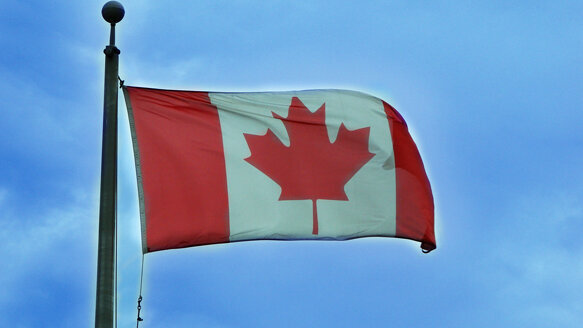The overall trend in Canadian health-benefit-plan cost increases showed significant slowing for a second consecutive year. According to a survey recently released by Buck Consultants, a Xerox company, insurers have lowered their expected inflation costs for health benefit premiums from 14.4 percent in 2011 to 11.7 percent in 2012. This overall trend includes prescription drugs, medical expenses, hospital coverage, and dental care.
The 2012 "Canadian Health Care Trend Survey," the firm's 12th annual study, analyzes the health cost trend assumptions that factor into the premium rate setting of nine major Canadian insurers.
The survey shows a downward trend in dental cost inflation across the country (from 8.2 percent last year to 8.0 percent in 2012). Use of dental services — a factor that is sensitive to economic conditions — has gone down, perhaps reflecting increased employee confidence in job retention and availability of benefits.
Insurers have dropped their inflation factors for prescription drugs — the fastest-increasing expense paid by group insurance plans — from 14.2 percent in 2011 to 12.1 percent in 2012, a 15 percent drop.
"This is due to two important factors," said Sandra Pellegrini, leader of Buck's Canadian Health and Productivity consulting practice. "In 2010, several provinces implemented generic drug pricing reforms that reduce their cost. Also, the patents expired for several blockbuster pharmaceuticals (such as the top-selling cholesterol drug Lipitor in 2010, Plavix in 2011, and Crestor, Advair and Symbicort in 2012), opening the door for lower-cost generic substitutes."
"Despite this good news however, it is important to understand the growing impact of extremely high-cost specialty/biologic drugs as a key driver of costs," said Pellegrini. She cited a study by Express Scripts showing that this group of drugs is projected to grow as a percentage of overall drug spend from 19.5 percent in 2011 to between 25 and 30 percent by 2015.
Hospital inflation factors have seen an overall decline in inflation rate since 2008, but this year there has been a slight increase, from 8.2% to 8.4%. "This may represent the impact of an aging population and the related incidence and duration of hospital stays, despite the continuing shift from inpatient to outpatient care," said Pellegrini.
"Buck's 2012 Health Care Trend Survey has some good news for employers," said Joseph Ricciuti, Buck's managing director in Canada. "The drug, health and dental cost trend factors are lower again in 2012. While costs are still increasing more than inflation, it is important that employers keep to the strategies they are starting to implement on the supply side - through deductibles and claims management - and the demand side - through wellness programs and work-life balance initiatives — in order to continue to tightly manage the costs of their benefits programs."
Buck Consultants' "Canadian Health Care Trend Survey" summarizes the trend factors used by major Canadian group insurers to project future health care plan costs for calendar year 2012. The survey compares current trends to results for the previous four years. The study provides trend factors by type of coverage: prescription drugs, medical services and supplies, hospital, and dental care. Dental care trend factors are provided by utilization, fee inflation, and a composite trend.
The complete survey report is available for no cost at: www.buckconsultants.com/ca/en/Newsandevents/Surveys.aspx
(Sources: Buck Consultants and Xerox Canada)
The 2022 Pacific Dental Conference, which is scheduled to take place March 10 to 12, will be an all-virtual event for the second consecutive year, ...
OTTAWA, Ontario, CANADA: World War I began on July 28, 1914, and lasted until Nov. 11, 1918. This year marks the centennial of the Canadian Army Dental ...
NEW YORK, NY, USA/LEIPZIG, Germany: Less dentists in Canada are having their denture prescriptions fabricated in the United States and offshore, a new ...
TORONTO, Ontario, Canada: Less than one per cent of healthy urban children surveyed in Toronto had received dental care by the recommended age of 12 months ...
TORONTO, Canada: The majority of dentists in Canada find it difficult to make time to visit dental exhibitions, figures in the new annual report by the ...
LONDON, Ontario, CANADA: Clinician’s Choice has announced the Canadian Rockies Dental Conference, sponsored by Hands-OnLine LIVE, from Aug. 11 to 13 at ...
OTTAWA, Ontario, CANADA: The Canadian Dental Association (CDA) recently welcomed the final report by the Canadian Pain Task Force, An Action Plan for Pain ...
OTTAWA, Ontario, CANADA: The Canadian Dental Hygienists Association and the Canadian Dental Association have each have come out in support of the ...
MADISON, Wis., USA: Dr. Ron Goodlin of Aurora, Ontario, took the helm as president of the American Academy of Cosmetic Dentistry (AACD) during the ...
OTTAWA, Canada: Members of the Canadian Paediatric Society have stated that access to dental care must be improved for Canadian children. Although several ...
Live webinar
Mon. 12 January 2026
9:00 AM EST (Toronto)
Prof. Judith Jones D.D.S; M.P.H., Prof. Kakuhiro Fukai D.D.S., Ph.D, Dr. Bathsheba (Bethy) Turton
Live webinar
Wed. 14 January 2026
12:00 PM EST (Toronto)
Dr. Théo Laplane, Dr. Robert Gottlander DDS
Live webinar
Fri. 16 January 2026
12:00 PM EST (Toronto)
Live webinar
Mon. 19 January 2026
1:00 PM EST (Toronto)
Philipp Kopp, Michael Seeber
Live webinar
Thu. 22 January 2026
2:00 PM EST (Toronto)
Dr. Nicola M. Grande DDS, PhD
Live webinar
Wed. 28 January 2026
8:00 AM EST (Toronto)
Live webinar
Wed. 28 January 2026
11:00 AM EST (Toronto)
Prof. Dr. Jan-Frederik Güth



 Austria / Österreich
Austria / Österreich
 Bosnia and Herzegovina / Босна и Херцеговина
Bosnia and Herzegovina / Босна и Херцеговина
 Bulgaria / България
Bulgaria / България
 Croatia / Hrvatska
Croatia / Hrvatska
 Czech Republic & Slovakia / Česká republika & Slovensko
Czech Republic & Slovakia / Česká republika & Slovensko
 France / France
France / France
 Germany / Deutschland
Germany / Deutschland
 Greece / ΕΛΛΑΔΑ
Greece / ΕΛΛΑΔΑ
 Hungary / Hungary
Hungary / Hungary
 Italy / Italia
Italy / Italia
 Netherlands / Nederland
Netherlands / Nederland
 Nordic / Nordic
Nordic / Nordic
 Poland / Polska
Poland / Polska
 Portugal / Portugal
Portugal / Portugal
 Romania & Moldova / România & Moldova
Romania & Moldova / România & Moldova
 Slovenia / Slovenija
Slovenia / Slovenija
 Serbia & Montenegro / Србија и Црна Гора
Serbia & Montenegro / Србија и Црна Гора
 Spain / España
Spain / España
 Switzerland / Schweiz
Switzerland / Schweiz
 Turkey / Türkiye
Turkey / Türkiye
 UK & Ireland / UK & Ireland
UK & Ireland / UK & Ireland
 International / International
International / International
 Brazil / Brasil
Brazil / Brasil
 Latin America / Latinoamérica
Latin America / Latinoamérica
 USA / USA
USA / USA
 China / 中国
China / 中国
 India / भारत गणराज्य
India / भारत गणराज्य
 Pakistan / Pākistān
Pakistan / Pākistān
 Vietnam / Việt Nam
Vietnam / Việt Nam
 ASEAN / ASEAN
ASEAN / ASEAN
 Israel / מְדִינַת יִשְׂרָאֵל
Israel / מְדִינַת יִשְׂרָאֵל
 Algeria, Morocco & Tunisia / الجزائر والمغرب وتونس
Algeria, Morocco & Tunisia / الجزائر والمغرب وتونس
 Middle East / Middle East
Middle East / Middle East






















































In 1991 I had dental coverage for my family of $4,000.00 per person. In order to have the same coverage today, how much coverage would I need in my plan?